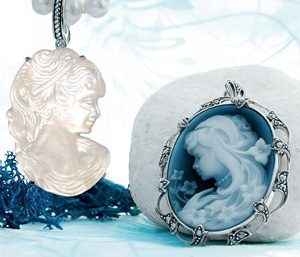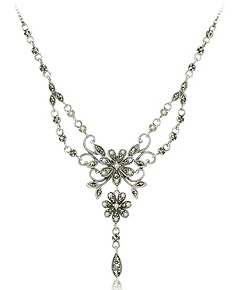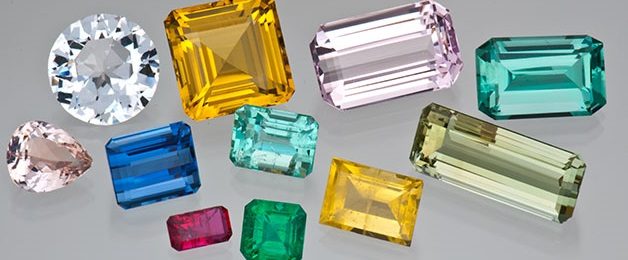A wonderful journey of Jewels through time

Romancing The Gemstones
Gemstone longevity
I was recently in the wonderful city of London, visiting the jewels of the Victoria & Albert Museum. What a pleasure. The V & A is easily world’s largest museum of decorative arts and design, owning one of the more vast and fine jewellery collections anywhere. The exhibition is a journey through the works of goldsmiths over the last 500 years in the West, although there are some pieces that predate this time period in the collection. For anyone like me, for whom jewels and precious stones are part of daily life, visiting the V & A is a pleasurable necessity!

Cameos courtesy V & A
Romancing the Gemstones
The most charming thing about this tour through the history of jewellery is to appreciate how beautiful the precious stones are. It does not matter if they are embedded in Renaissance, Rococo or Victorian settings, they are all spectacular. The marvellous amethysts, imperial topaz, rubies of different intensities, emeralds from Colombia extracted in the sixteenth century. Citruses, garnets, jades, lapis lazulis and many other gems, without forgetting the organic gemstones represented by corals, nacres, pearls and amber. There are of course diamonds … so many diamonds! None of these gems show the slightest sign of old age … What Gemstone envy I have!
The journey
Cameos are worth analysing carefully in our query about what happened with jewellery design through the centuries, originating in Greece and Rome. We discover a leap from austere Medieval design to the Renaissance, its greatest innovation being large ornate pendants. We see visible perfection in the techniques of carving precious stones. Another great development during this historical epoch was enamelling with metals, most often gold. We find pendants, bracelets and rings with enamel of many colours made with crushed precious stones. Then we are guided to the cameos of the antiquity, where precious stones were used to carve portraits of the sovereign. There are several well-known cameos with the effigy of Queen Elizabeth. These are large carved oval gemstones with the face of the queen in profile. These cameos were worn mostly by the noblemen of the court.
Art & Architecture leading fashion
Baroque fashion repeats the trend that is also seen in the architecture and paintings. The lines are more complex. The precious stones are no longer sewn into the dress but are worn in a kind of interchangeable bra, which is placed over the dress and is worn almost always with matching earrings and necklaces. In addition the floral images are embraced. It is the apogee of the designs with beautifully detailed ties, carved and enamelled in gold. The Rococo is nourished with gemstones of all possible colours, the designs were daring at the time, with the mixing and interlacing of the metal. The bouquet of flowers with coloured gemstones makes its most perfect expression, in this time.
In the 1800’s the jewellery shapes are stylised, there is a strong influence of the ornate Napoleonic Style that marks the fashion of the time, with smooth lines. However there is a noticeable difference between this type of design and the designs on the other side of the English Channel, faithful to its own style.
The Victorian era carries with it the spirit of romanticism as a philosophical movement which is reflected in its jewellery. Queen Victoria was a lover of this type of jewellery.
Jewels of Berlin Iron
At the V&A you can discover a remarkable part of Prussian jewellery history that is relatively little known, which is Berlin Iron. This jewellery had its apogee in the first half of the 1800 as well. Gold and silverware were replaced with delicate and intricate pieces made of black Iron embossed with delicate watermarks. Cast-iron jewellery was an inexpensive but fashionable novelty for consumers in Europe and America from around 1800 to 1860. Developed in Germany in 1806–7 and often worn during mourning, it became the symbol of Prussian patriotism and resistance to Napoleon I in the Prussian War of Liberation fought from 1813-15. Women donated gold jewellery to their country in exchange for iron inscribed ‘I gave gold for iron’.

Reflections on the past
Walking through the city of Shakespeare, I stopped to think that in fact for centuries we have done nothing but mine the canons of 500 years of jewellery history. All the designs we see today have the same variety of precious stones, fortunately enlarged thanks to modern extraction methods, that have allowed us to discover the so-called new generation of precious stones. The good news is that today jewels of nice design, are accessible to most, something that did not happen until a few years ago. Rocks & Co’s collections show designs inspired by different styles of jewellery, with prices for all wallets and … with authentic gemstones!






